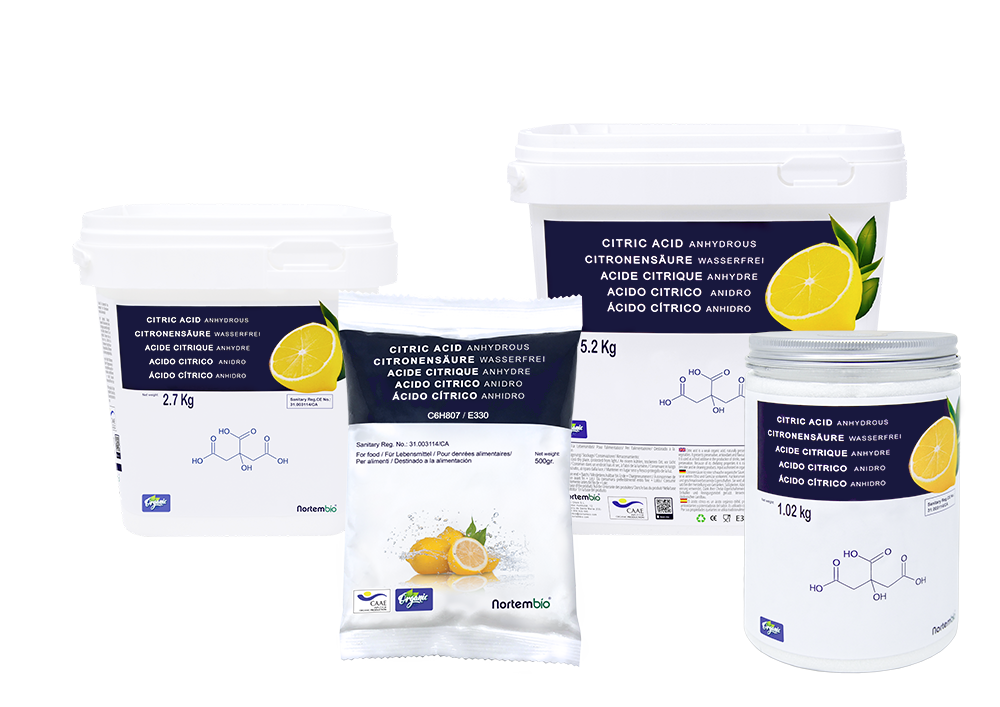Citric Acid in livestock
Birds and fowls
According to several studies, positive effects can be observed on the performance of broilers when Citric Acid is added to 50 g/kg to the diet. In addition, this addition improves the performance and mineralization of their bones.
Add 10 g/l of Citric Acid to drinking water to improve the stability of the digestive system and the absorption of nutrients. The addition of citric acid at 4,5º 6% levels in drinking water 8 hours before slaughter reduces gizzard, fecal contamination by pathogenic bacteria, and reduces the microbial load of poultry carcasses.
Pigs
Published studies show that Citric Acid with dietary levels of 5 up to 25 g/kg has a positive effect on the performance of weaned piglets.
In addition, the inclusion of 30 g/kg of citric acid in the feed during the first 25 days after weaning of the piglets has a positive effect on their growth.
Other studies show that the addition of Citric Acid (30 and 60 g / kg of food) to a diet deficient in corn-soybean meal phosphorus improves the utilization of phosphorus in weaned piglets, highlighting the positive effects on bone mineralization and the performance of animals.
Add 10 g/l of Citric Acid to the drinking water to improve the speed of the digestive system and the absorption of nutrients.
Ruminants
According to some studies, positive effects are observed in cattle and sheep in the digestibility and metabolism of minerals when diets are supplemented with 14 g/kg of citric acid in a mixed ration.
Add 10 g/l of Citric Acid to drinking water to improve the stability of the digestive system and the absorption of nutrients.
Calves
Important positive effects on the growth performance of calves fed with 20 g / kg of citric acid as a milk substitute.
Add 10 g/l of Citric Acid to drinking water to improve the stability of the digestive system and the absorption of nutrients.

Birds and fowls
According to several studies, positive effects can be observed on the performance of broilers when Citric Acid is added to 50 g/kg to the diet. In addition, this addition improves the performance and mineralization of their bones.
Add 10 g/l of Citric Acid to drinking water to improve the stability of the digestive system and the absorption of nutrients. The addition of citric acid at 4,5º 6% levels in drinking water 8 hours before slaughter reduces gizzard, fecal contamination by pathogenic bacteria, and reduces the microbial load of poultry carcasses.

Pigs
Published studies show that Citric Acid with dietary levels of 5 up to 25 g/kg has a positive effect on the performance of weaned piglets.
In addition, the inclusion of 30 g/kg of citric acid in the feed during the first 25 days after weaning of the piglets has a positive effect on their growth.
Other studies show that the addition of Citric Acid (30 and 60 g / kg of food) to a diet deficient in corn-soybean meal phosphorus improves the utilization of phosphorus in weaned piglets, highlighting the positive effects on bone mineralization and the performance of animals.
Add 10 g/l of Citric Acid to the drinking water to improve the speed of the digestive system and the absorption of nutrients.

Ruminants
According to some studies, positive effects are observed in cattle and sheep in the digestibility and metabolism of minerals when diets are supplemented with 14 g/kg of citric acid in a mixed ration.
Add 10 g / l of citric acid to drinking water to improve the stability of the digestive system and the absorption of nutrients.

Calves
Important positive effects on the growth performance of calves fed with 20 g / kg of citric acid as a milk substitute.
Add 10 g/l of citric acid to drinking water to improve the stability of the digestive system and the absorption of nutrients.
Recommended products

Food Grade Citric Acid
Adding NortemBio Citric Acid in your livestock’s diet allows a better growth of the same by stabilizing their digestive system and therefore, the absorption of nutrients. In addition, its inclusion in animal feed does not report any type of risk to the consumer or to the environment.

